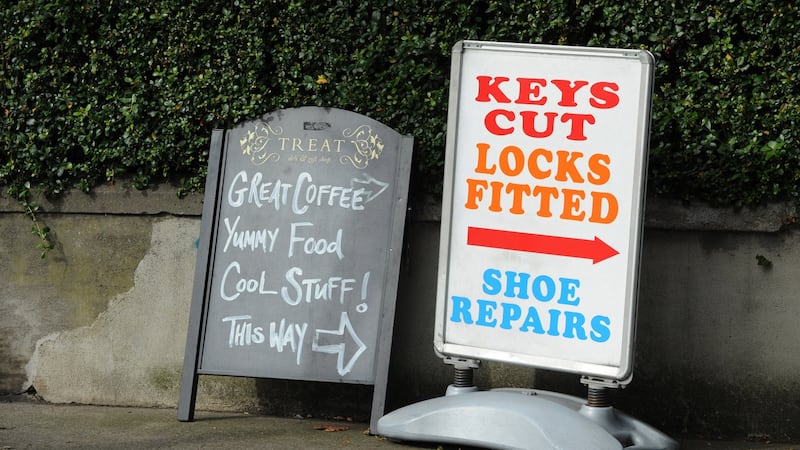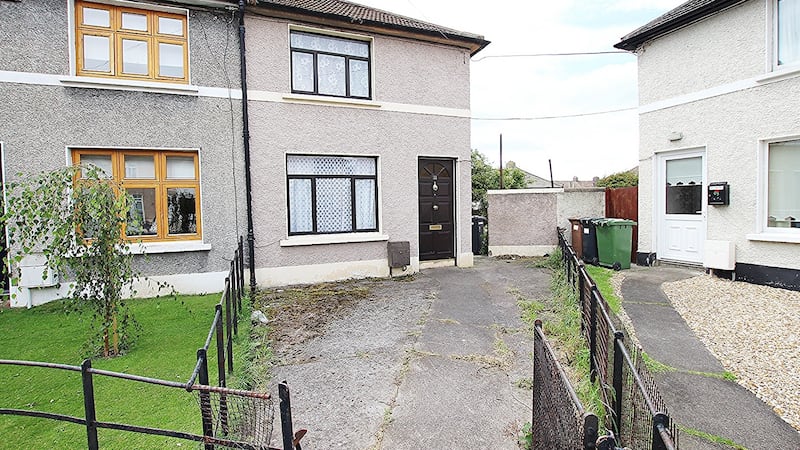Cabra is an area of the northside that hasn’t been given a lot of love or attention over the years, but that could be all set to change.
The nearby neighbourhoods of Glasnevin, Drumcondra and Castleknock have long been viewed as some of the more desirable northside Dublin locations, a little bit behind Clontarf in the overall pecking order.
Directly adjoining Stoneybatter experienced a boom in popularity from the Celtic Tiger era onwards, both for its central location to the city and burgeoning population of professionals and hipsters alike. Stoneybatter is now considered well out of reach by many first time buyers.
Cabra, meanwhile, in that period from 1996 to 2008, and now 2013 onwards, has been somewhat overlooked. However, as house prices continue their rise across the capital, Cabra is beginning to rear its head as one of the best up-and-coming locations in which to buy.
What’s the housing stock like?

At the turn of the 20th century, Cabra was essentially a rural part of Dublin; however, despite that it was prominent in the Easter Rising of 1916, when 50 volunteers from the Dublin Battalion put up barricades outside St Peter’s Church to block the advance of British troops onto the Navan Road.
In the intervening 101 years, Cabra has been subsumed into the greater Dublin City area, with large-scale building of social housing in the 1930s and 1940s seeing the population of the town swell massively. It’s in these properties that most of the opportunities to buy wisely in the current market lie, with a number of houses – in varying conditions from turn-key to needing total renovation – currently on the market and offering value that can scarcely be found so close to Dublin’s centre.

The area is not limited to that sector of the market, however, with Cabra Road’s red-brick period builds offering opportunities to buy homes that would not look out of place in Dublin 6.
“The corporation-built houses are well built and have good-sized back gardens – some of which are 80-100 feet, meaning that down the line if you want to build an extension, then you have space to do that, and still keep a good-sized garden,” says Siobhán Foley, director of Mason Estates.
Transports links
Cabra is that little bit further out of town than Stoneybatter and Drumcondra, and is served by the 122 and 120 bus routes. But the transport links to the town are about to change dramatically with the opening of the extended Luas line in December.

Both ends of Cabra, east and west, will have a stop each, at Broombridge and Fassaugh Avenue; the new blue line will run into St Stephen’s Green shopping centre, passing O’Connell Street, linking up with both the red and green lines , which will give a direct artery to the business centre, making work and leisure commutes far easier. The new line will also pass by the new DIT campus in Grangegorman, which will open up Cabra as a rental hub for students from the university.
“Cabra offers most of what Stoneybatter offers really,” says Paul Lappin, director of Lappin Estates. “Good transport links with the new Luas line, it’s close to Phibsboro, and the properties have good gardens and make good family homes. Property prices are rising, mostly on the back of the new Luas line.”
What's the food and drink scene like?
The area has two main thoroughfares, Fassaugh Avenue and Cabra Road, around which many residential roads lead off. However, neither of the two main roads have experienced the Celtic Phoenix's boom in terms of independent coffee shops and restaurants. Fassaugh Avenue has three pockets of service-unit sections, with convenience stores and a number of traditional pubs, with the brutalist, black façade of Cabra House the most notable outlet along that stretch.

Cabra Road has more of a village feel, with what is known as the 17 Shops, lining the road, but even here the fare lacks star performers in the retail sense.
Clarkes coffee shop and bakery, which will celebrate its 50-year anniversary on 5th of February 2018, bucks that trend; the Dublin landmark has been serving excellent food and coffee since owner Margaret opened its doors.
But Clarkes needs similar, newer outlets to act as a honeypot for residents and the incoming student population. The area represents an unexploited market in that sense for any young barista-entrepreneurs looking to make their mark.
Schools and green space
Cabra is a built up area, but the planners did a good job in ensuring there is adequate green space. John Paul's Park, with the Cabra Parkside Community Sports Centre and Skate Park is a truly excellent facility, tucked away just off the Navan Road. There are numerous schools in the area, with the brand-new Gaelscoil Bharra, built on the grounds of Naomh Fionnbarra GAA club, offering some of the newest education facilities in the country. The unrivalled facilities of Phoenix Park are also just a few kilometres away.
Who lives there?
Cabra has until recently been a very traditional area, with locals living there for lifetimes and many outsiders bypassing purchasing there. But that is all changing.
“Many people who wouldn’t have considered Cabra before are buying here now,” says Lappin. “Up until about five years ago there was a stigma associated with Cabra. The red-brick houses of east Cabra have always been popular, but west Cabra was cheaper due to being further away from town. Now, both parts of Cabra have opened up to buyers and investors.”

Young professional couples and first-time buyers are the majority of buyers, which again bodes well for the area, bringing in a vibrancy through young families.
“People who were looking in Stoneybatter are finding the prices in Cabra a bit more affordable,” says Siobhán Foley of Mason Estates. “In Cabra they can secure a house instead of an apartment, but the prices are increasing.”
For those looking to catch the market at the right time, then that time is now. There was a circa €50k price jump across the area back in March, as works for the Luas began to take shape, and another price jump when the line opens is likely.
What is being built?
The area breaks from the norm for Dublin at present in that there are no new developments coming to the market. The reason being that space is at such a premium. In the long-term there is land around Carnlough Road that may be developed, as well as the potential for developers to buy one of the many industrial estates in the area to rezone for housing, but for now pre-existing builds form the market.
What are the going rates?

A two-bed, terraced, starter home on the Ratoath Road starts at as low as €225k. A jump up to €330k will get a three-bed, terraced house on Galmoy Road. A semi-detached, three-bed on Cabra Drive is on the market for €420k. At the top end of the market, a five-bed, detached period home on Cabra Road has an asking price of €795k.
FOR SALE
- Two-bed, one-bath, at 33 St Eithne Road, for €275k. Agent: Lappin.
- Three-bed, one-bath, terraced house at 5 Offaly Road, for €380k. Agent: Mason Estates.
- Five-bed, four-bath detached home, Bective House, 133 Cabra Road, for €795k. Agent: Lisney.
FOR RENT
- One-bed, one-bath apartment on Cabra Road, for €1,450 a month. Agent: Newcombe Estates.
- Three-bed house on Liscannor Road, for €1,975 a month.











